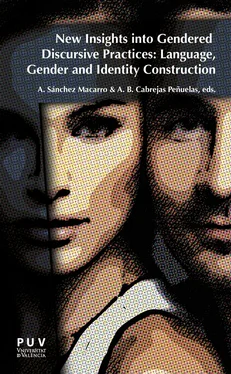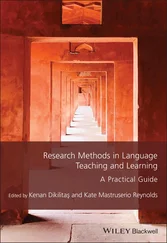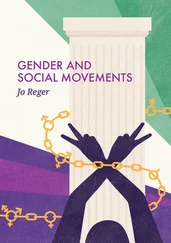Keywords : Gender and language, directive speech acts, female adolescent magazines, advice columns, persuasion.
1 Introduction
Gendered beings perform gendered actions so that new members of society learn how to do gender according to their biological sex, so as to be considered members of the club. This learning to be male or female is a process that starts with birth and goes on for life; no individual escapes from this socialization process, even if we are aware of the asymmetry that this enculturation process may impose on others or on ourselves. Eckert and McConnell-Ginet (2013: 20) claim that three principles govern gender: it is learned, collaborative and performed: “gender is not something we have, but something we do” (Eckert and McConnell-Ginet 2013: 20). According to these principles, gender must be taught and is, thus, enforced, which makes engendering a collaborative process (i.e. it is a social practice, Eckert and McDonnell-Ginet 2013).
Language is one of the main instruments to enforce gender and teenage magazines ( teenzines, as Currie (1999) calls them) are language manifestations that can be considered sites for the construction of gender roles to naturalize certain behaviours, among others, heterosexuality, concern over physical appearance, a quest for popularity or playing certain gender roles (for this latter issue, see, for instance, López Rodríguez (2007) or Jiménez Calderón and Sánchez Rufat (2011)). Language is both the process and the product of gendering: language reflects pre-exiting categories and, by doing so, constructs and maintains them (Eckert and McConnell-Ginet 2013: 22).
Teenage magazines have been the focus of study of numerous academic publications, predominantly those written in English, and, principally the ones published in the U.S. context; there also exists research on teenage Spanish magazines (e.g. Plaza Sánchez (2005) and (2009)), but, to my knowledge, none adopts a contrastive view between the discourse used in magazines written in these two languages and published in these two countries to gain insights into their linguistic and cultural similarities and/or differences. The phenomenon of an ever-growing globalized world and the obvious influence of the American culture on the Western world favours the hypothesis that magazines for American and Spanish female adolescents will have more points in common than discrepancies. Nevertheless, a contrastive study like the present one can provide some empirical evidence on the issue.
Thus, the main purpose of the present paper is to study language as manifested in teenzines to gain access to the set of values, beliefs and norms of action being enforced in these publications; in order to do so, the language used in advice columns will be analyzed to try to unveil the way magazine writers and young female teenagers interact. The final aim of this investigation is to discover the role teenzines may play in “female teenage identity construction” (García Gómez 2010: 136) by means of the discursive devices used in them.
The research questions that guide this study are the following:
1.What issues are raised by girls 1in teenzine advice columns? How do the concerns depicted in these texts contribute to enforcing gender?
2.How is advice phrased (i.e. linguistic realizations) in English and Spanish in order to enforce given attitudes or behaviour? In what way are these linguistic devices persuasive?
In order to answer these questions and thus elaborate a discursive approach to the exploration of how gender is enforced in adolescent magazines, the linguistic realization of the exchanges in advice columns will be examined. The questions posed by the female readership will show their main concerns when facing a period of self-construction and self-identification and the answers provided by teenzine writers will most surely be affected by their perception and interpretation of their readers’ attributed gendered roles. According to Eckert and McConnell-Ginet (2013: 9), studies show that male and female children are interpreted and interacted with differently by adults. Extrapolating this idea to magazine writers, they must be influenced by their perceptions and beliefs when they address a teenage female readership. Thus, by examining the messages addressed to female teenagers and the linguistic strategies used for it, it will become clear the way female gender is interpreted in teenzines for girls and how this interpretation may condition the construction of a gendered identity in a young and easily-influenced female readership (Currie 1999, Saz Marín 2007).
After a brief revision of studies dealing with the role magazines for adolescent girls play in their socialization process, the empirical study carried out to tackle the issue of enforcing gender in teenzines is presented: the theoretical framework used in the analysis, the methods for data collection, the results gathered from the analysis, together with an interpretation of those results. Finally the concluding section recalls the main aims for the present study and the results obtained.
2 Teenzines as socialization devices within a community of practice
Teenzines can be considered a linguistic social practice (i.e. discursive manifestation) of a community of practice (Eckert and McConnell-Ginet 1992) conformed by two hierarchically organized groups of members: magazine writers (constrained themselves by given editorial policies) and female adolescent readers. The relationship between the groups is asymmetrical, because the latter (i.e. female adolescents) resorts to the former (i.e. magazines writers) in order to receive orientation to participate in the world around them (Eckert 2006: 1). The community of practice is a “prime locus” of the process of identity and linguistic construction where certain discursive conventions take place (Eckert 2006: 4), and teenzines represent one of those discourses.
A large body of literature on teenzines has been carried out within the discipline of sociology (Pierce (1990), Currie (1999, 2001), Evans et al . (1991), Jackson (2005), Joshy (2012), among others), since female adolescent magazines are considered socialization devices. Peirce (1990: 492) examines the “socialization messages” teenage girls receive from Seventeen , number one American magazine for female adolescents, from 1961 to 1985, and concludes that, although the feminist movement in 1972 had an effect on the content of issues around that period (e.g. promoting self-development), the magazine mainly reinforces traditional ideologies (Pierce 1990: 498-499). Traditional roles stress “looking good, finding a man, and taking care of home and children [whereas] (…) feminist messages emphasize taking care of oneself, being independent, and not relying on a man for fulfilment or identity” (Pierce 1990: 497). According to Pierce (1990: 499), magazines for female adolescents can be “a powerful reinforcer of the traditional ideology of womanhood”.
In the same line of argument, Currie (1999: 141) claims that “girls give the realities which they identify in texts ontological status: “realistic” messages offered by the text are seen to convey truth about the social world”. If this is so, the messages transmitted in teenzines can wield a significant influence on their readership since young readers construct reality as they read. One vital issue to consider is what types of role models are being displayed in teenage magazines: are the values of education, hard work, perseverance and discipline being promoted? Or, on the contrary, are rapid and easy success and popularity prioritized? Teenzines, like the media in general, present celebrities whose lifestyle is not generally worthy of imitation as idols (García Gómez 2010: 149), which makes our youngsters to try to emulate them (Plaza Sánchez 2009: 133). This absence of constructive role models for women-to-be in teenage magazines is also highlighted in Currie’s (1999: 44) sociological study.
Читать дальше












